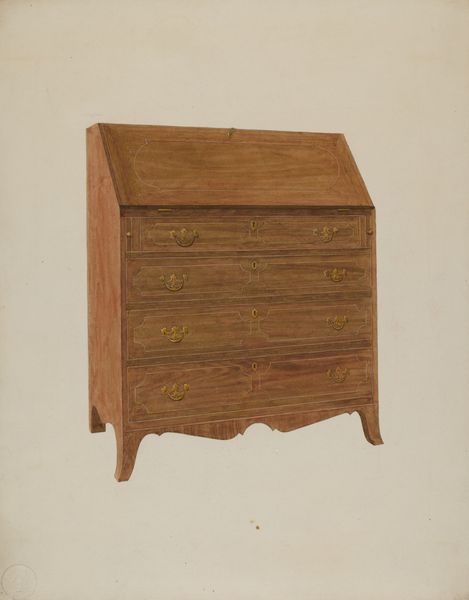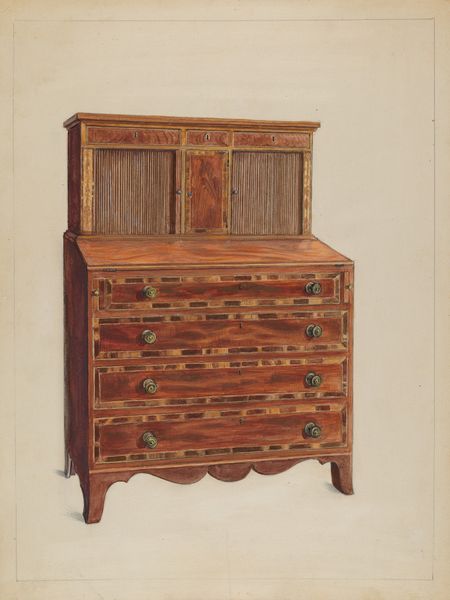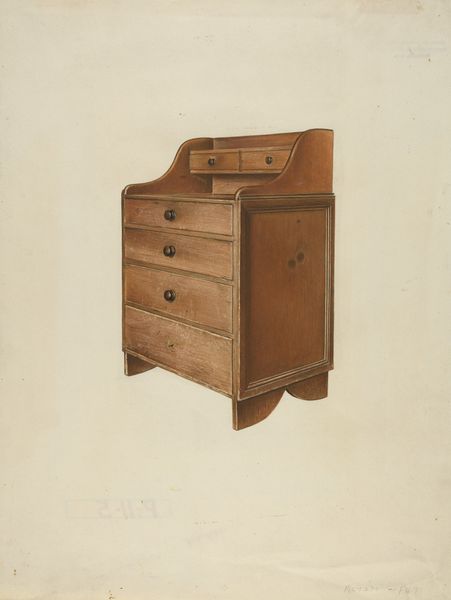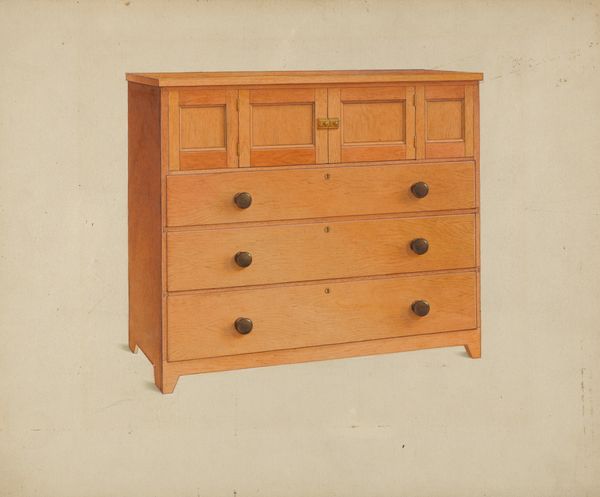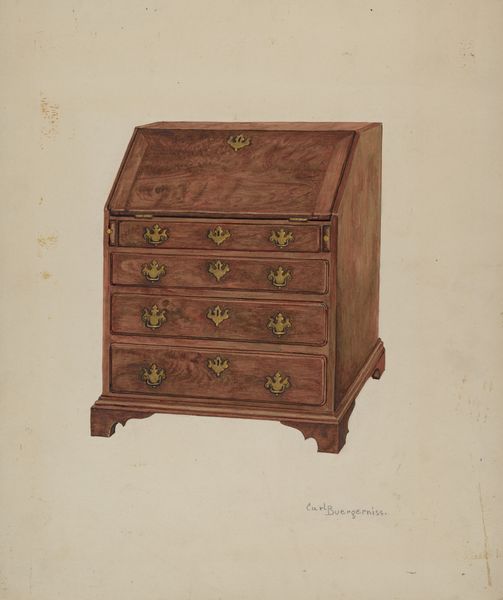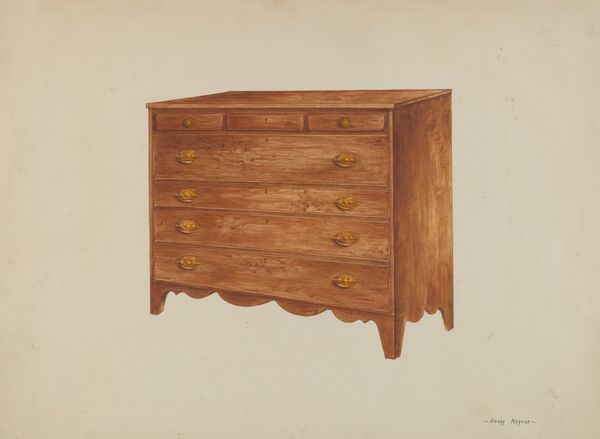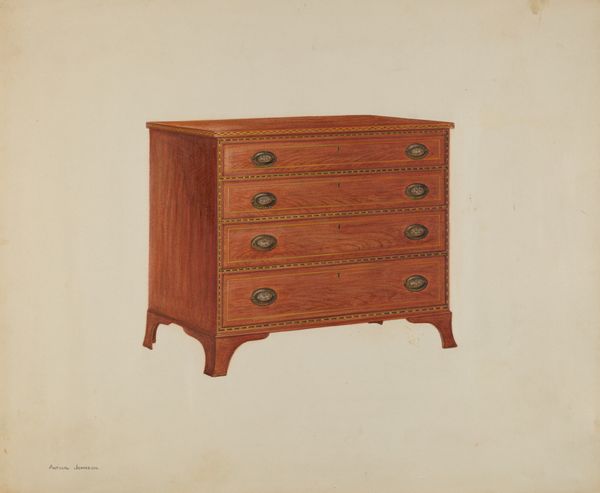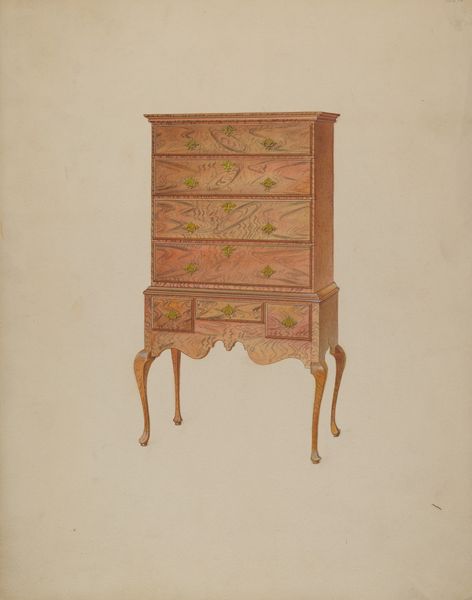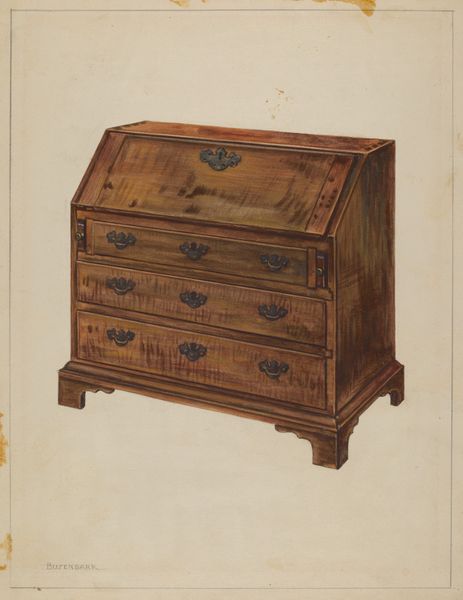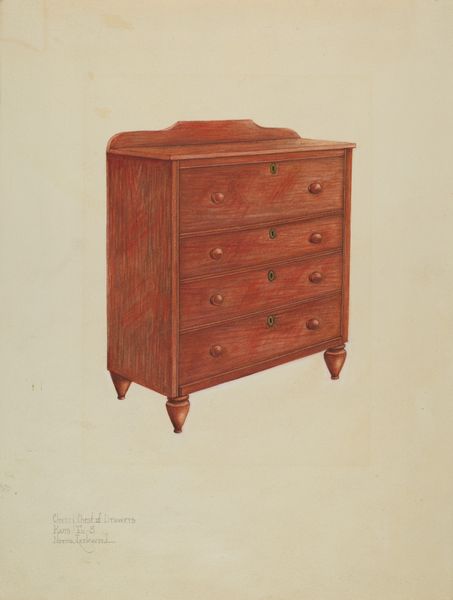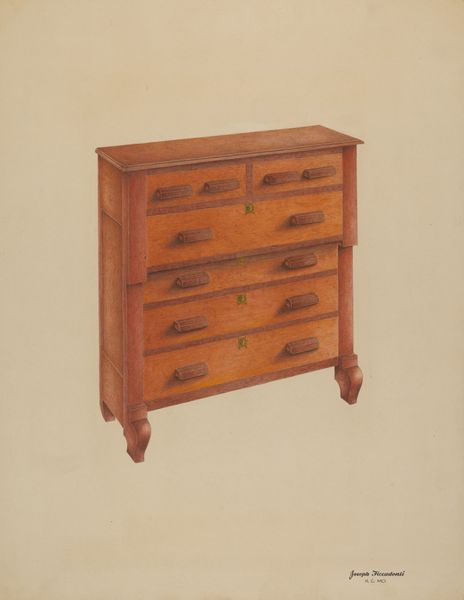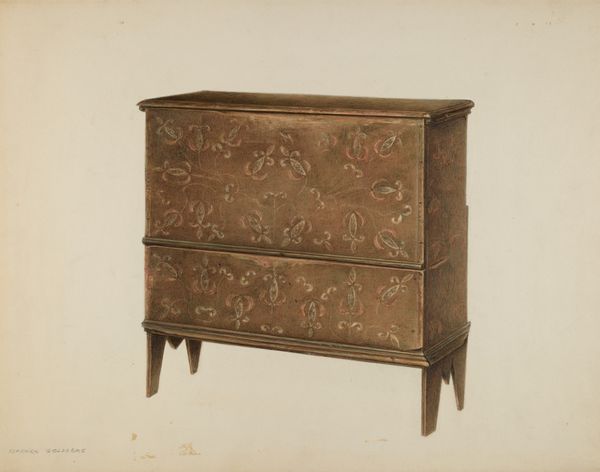
drawing, watercolor
#
drawing
#
water colours
#
watercolor
#
watercolor
#
realism
Dimensions: overall: 28 x 35.5 cm (11 x 14 in.) Original IAD Object: 40 5/8"high; 43 3/4"wide (max.); 20 1/8"deep.
Copyright: National Gallery of Art: CC0 1.0
Curator: The artist Ferdinand Cartier created this work, "Chest of Drawers," circa 1938, employing watercolors. Editor: It feels...comfortably bourgeois. The symmetry is precise, the wood grain carefully rendered. Almost clinically so. Curator: "Clinically" is interesting. Considering the period, do you read any coded messages in this seemingly straightforward image of domesticity? Editor: Well, the chest is an icon, isn’t it? Of storage, of secrets, the hiding place of a household’s most valued possessions. Even its physical presence—a blocky monument. This watercolor shows it glowing—but also cut off from any environment. Like an effigy. Curator: That's a powerful reading. The question becomes, is it deliberate? Look closely at Cartier’s method: he details the veneer meticulously, almost fetishistically—every grain of the wood is articulated. This, for me, points to the immense value placed on such objects within the domestic sphere, and speaks to an ideal about owning them. Editor: Perhaps he sees the wood as a language, a code to be deciphered through careful study. Each knot, each swirling grain, a symbolic trace? The gilded decoration on the top drawer seems particularly meaningful. Curator: Perhaps he is asking us to decode wealth by means of the domestic structure and its contents. But there's a fragility in rendering all this labor so faithfully in watercolour: so temporary, such thin colour applied, compared to the solid heaviness implied by its function. I also see it pointing to the way even luxurious materials can start to feel brittle and break under scrutiny. Editor: It feels elegiac. Not only is the method thin but it seems there’s been so much erased… that erasure also says something: this isn't just about domestic harmony. What isn't shown tells almost as much of a story of an interruption. I wonder what Cartier chose to conceal, as well as reveal? Curator: And, of course, who had access to such luxury in 1938, and who produced it? Perhaps this watercolour does offer the keyhole into Cartier's critical eye that you pointed toward after all... Editor: This dive has opened my eyes, thanks. I now consider the secrets of every object. Curator: Likewise, looking at this "simple" piece of furniture through the lens of memory gives the artifact even more gravity.
Comments
No comments
Be the first to comment and join the conversation on the ultimate creative platform.
